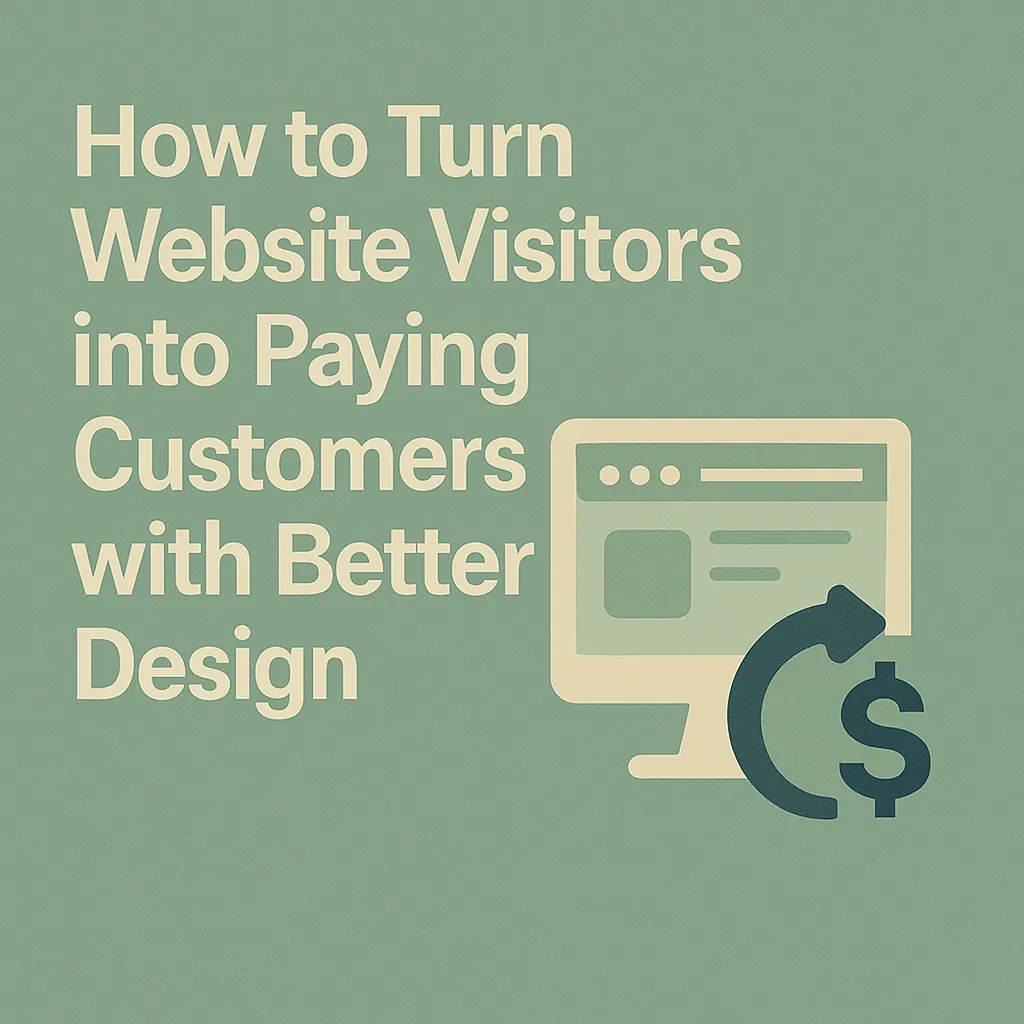
How to Turn Website Visitors into Paying Customers with Better Design
How to Turn Website Visitors into Paying Customers with Better Design
Introduction
You’ve built a website, spent time driving traffic, and now visitors are landing on your pages. But are they converting into paying customers? The truth is, a website isn’t just about aesthetics—it’s about functionality and user experience (UX). A poorly designed website can cause users to leave within seconds, while an optimized design can guide them toward making a purchase.
Why does this matter? Studies show that 88% of online shoppers won’t return to a website after a bad experience. Additionally, 75% of users judge a company’s credibility based on website design. These statistics emphasize the undeniable impact of design on conversion rates.
This guide will dive deep into how enhanced web design can turn visitors into paying customers. We’ll cover the psychology behind conversions, user-friendly design principles, and actionable strategies to maximize your website’s potential. By the end, you’ll have a clear roadmap to improve your site and increase sales.
Understanding User Experience (UX) and Its Role in Conversions
UX is the foundation of conversion rate optimization. Every time a user visits your website, you have mere seconds to engage them. Here’s how UX can influence their purchasing decision:
1. Emotional Connection: Why First Impressions Matter
The first few seconds of a visitor’s experience on your website determine whether they stay or leave. Design plays a massive role in triggering emotional responses that influence purchasing behaviors.
Color schemes, typography, and visuals all contribute to how users feel when they land on your page.
Trust and credibility are built through a polished, professional design. A cluttered or outdated website can create doubt and hesitation, reducing conversions.
A study by Google found that aesthetically pleasing, simple websites create a stronger first impression than overly complex ones.
2. Navigation and Accessibility: Make It Easy to Explore
Ever landed on a website that felt like a maze? If users have to struggle to find what they need, they’ll leave. Navigation should be intuitive and effortless.
Use a clear menu structure with broad categories and logical subcategories.
Ensure buttons, CTAs, and important sections are not buried or hard to find.
Optimize for mobile-friendliness—more than 50% of web traffic comes from mobile devices, so if your website isn’t responsive, you’re losing potential customers.
Ensure fast loading speeds. Slow websites (over 3 seconds load time) see a 40% bounce rate increase.
3. Content Relevance: Speak Directly to Your Ideal Customer
Your website’s content must immediately communicate who you are, what you do, and why users should care.
Craft compelling headlines that grab attention and communicate your value proposition.
Avoid generic, jargon-heavy content—speak directly to your audience, addressing their pain points.
Use high-quality images, videos, and infographics to enhance engagement.
Keep it scannable—most users skim content, so break text into digestible sections with subheadings and bullet points where necessary.
Design Elements for Conversion: Key Features That Drive Sales
1. Calls-to-Action (CTAs): Guide Visitors to Take Action
CTAs are the conversion drivers. Done wrong, they blend into the background. Done right, they stand out and compel users to act.
Make CTAs visually appealing with contrasting colors that grab attention.
Use persuasive action words (e.g., “Get Started Now,” “Claim Your Free Trial,” “Unlock This Deal”).
Place CTAs at strategic points—above the fold, within content sections, and at the end of persuasive arguments.
Test different variations using A/B testing to see what works best.
2. Trust Indicators: Building Customer Confidence
People are naturally skeptical when interacting with brands online for the first time. Incorporating trust signals reassures them that your business is legitimate and reliable.
Showcase testimonials and reviews—92% of consumers trust peer recommendations over branded content.
Display trust badges (e.g., SSL certificates, payment security seals, BBB accreditation).
Include visible contact details (phone numbers, email, and physical addresses) to build credibility.
List money-back guarantees or warranty information to reduce purchase hesitation.
3. Aesthetics and Brand Consistency: A Professional and Memorable Experience
A website that matches your brand identity and remains visually consistent enhances user trust.
Stick to a cohesive color scheme and typography across all pages.
Maintain a consistent tone and style in your content and imagery.
Consider white space—it improves content legibility and makes important elements stand out.
Psychological Aspects of Conversion: The Science Behind Persuasion
1. Color Psychology: How Hues Influence Buyer Decisions
Colors trigger subconscious emotions that influence behavior. For instance:
Red increases urgency (popular for sales and clearance promotions).
Blue conveys trust and reliability (common with financial and healthcare brands).
Green symbolizes growth and health (used frequently in eco-friendly and wellness brands).
Conclusion: The Blueprint to Maximizing Website Conversions
An optimized website isn’t just about looking good—it’s about functionality and guiding users toward action. By improving UX, implementing psychological triggers, and leveraging data-driven design changes, you can transform visitors into loyal, paying customers.
💡 Ready to boost your website’s conversion rate? Take the first step by analyzing your current design—small changes can lead to significant results. Need expert guidance? Let’s talk and optimize your website for success today! 🚀
